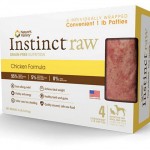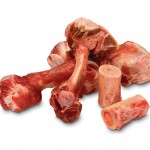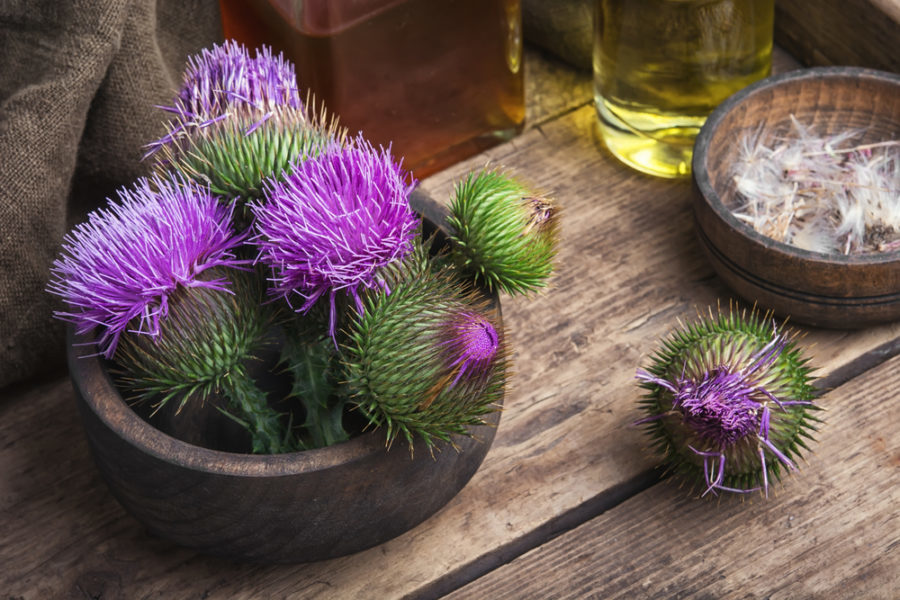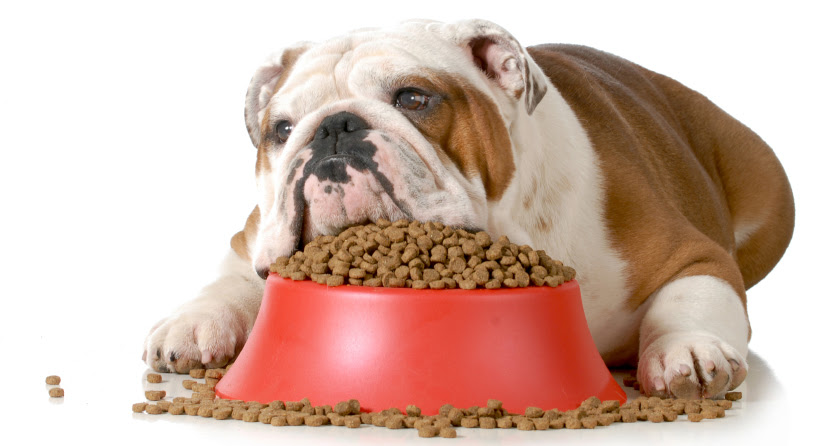Canine Cancer Cuisine
Written by Suzi Beber | Photography by Julie Austin
 One diet does not fit all, and what works well today may not be tolerated tomorrow. Tastes change and regular feeding schedules can be turned upside down. The guidance of a veterinarian or nutritionist can give a better idea of what to expect, but here are a few important points to get you started.
One diet does not fit all, and what works well today may not be tolerated tomorrow. Tastes change and regular feeding schedules can be turned upside down. The guidance of a veterinarian or nutritionist can give a better idea of what to expect, but here are a few important points to get you started.
First, the most critical thing is ensuring your canine cancer patient eats. This can be the most difficult job of all. The old adage, “If they go hungry long enough, they’ll eat anything,” does not hold true for cancer, despite what anyone tells you.
Second, pets with cancer lose weight, not only because they reduce their regular food intake, but also because of the tremendous metabolic impact of the disease. Dogs with cancer have an altered carbohydrate metabolism, so a diet lower in carbohydrates, while containing high quality proteins and fish oil as the primary fat source is best. Grains should account for no more than 10% of the diet. This leaves us with 30% to 50% meat, along with 30% to 40% fruits and vegetables. A calcium source and vitamin/mineral supplement complete the foundation of the diet. Third, try to use organic products, and always use distilled, filtered, or spring water. Using a crockpot is one of the easiest ways to prepare a nutritious meal for your cancer patient, and its aroma may be just the thing to entice your companion to eat.
 Fourth, knowing the percentage of protein, fats, and carbohydrates you are working towards makes it easier to choose ingredients for your cancer cooking challenge. Consider chicken, beef, turkey, or a novel protein like ostrich, emu or buffalo, along with liver and heart, eggs, carrots, broccoli, celery, cabbage, bok choy, turnip greens, spinach, and summer squash, enhanced by antioxidant-rich turmeric. Canned wild salmon, sardines and other fish can top off a meal of whole brown rice or whole oats and sweet potato or for a change, try protein-rich pseudo-grains, like quinoa and teff.
Fourth, knowing the percentage of protein, fats, and carbohydrates you are working towards makes it easier to choose ingredients for your cancer cooking challenge. Consider chicken, beef, turkey, or a novel protein like ostrich, emu or buffalo, along with liver and heart, eggs, carrots, broccoli, celery, cabbage, bok choy, turnip greens, spinach, and summer squash, enhanced by antioxidant-rich turmeric. Canned wild salmon, sardines and other fish can top off a meal of whole brown rice or whole oats and sweet potato or for a change, try protein-rich pseudo-grains, like quinoa and teff.
So, with the help of executive chefs Jenny Izaguirre of Bell + Whete and Stew Navarre of Local 360 (pictured above), we’ve cooked up some recipes to keep your dog drooling, with four-year-old Hadi (Maltese-poodle-mix) and six-year-old Finn (basenji-mix) as our four-legged test testers.
Fresh and Friendly Frittata
3/4 cup artichoke hearts, finely chopped (choose artichokes canned in water)
1 clove garlic, finely minced
3 free range eggs
2 tablespoons cold pressed extra virgin olive oil (butter can also be used)
1/4 teaspoon turmeric
1/4 teaspoon sea salt
1 tablespoon fresh oregano or 1½ teaspoons dried
1 cup grated goat cheese
1/4 cup whole grain oat flour or artisan whole grain bread crumbs
1. Preheat oven to 350ºF. 2. In oven-to-table cookware, whisk eggs and goat cheese together, then add remaining ingredients, making sure to mix thoroughly. 3. Sprinkle with extra dried oregano just before placing in the oven. 4. Bake 20 to 25 minutes, or until the centre of the frittata is set and the top is lightly golden. 5. Cool to room temperature, and just before serving, sprinkle with fresh wheat grass and/or parsley. Store in refrigerator or freezer.
Kombu Candy
Package of kombu
1/4 cup unpasteurized local honey
1/2 cup filtered water
1 cup finely ground almonds, Brazil nuts or hazlenuts
1. Soak dried kombu pieces in filtered water until soft. Drain and cut into small pieces, enough to fill 1/2 cup. 2. Combine honey with filtered water and bring to a boil. Reduce heat to simmer, add kombu, and continue to gently cook until liquid has evaporated. This takes about an hour. 3. Spread ground nuts on a parchment-covered cookie sheet and coat the kombu pieces in ground nuts. 4. Bake in preheated 300ºF oven for 30 minutes. Cool before feeding.
A Cocktail for Cancer
8 ounces raw chopped liver (beef, bison or chicken)
4 ounces grated carrots
1/2 ounce ground Brazil nuts (the richest source of natural selenium)
Combine and serve. This recipe can easily be pureéd in a food processor or blender, and served as a complete meal or a topping for other meals. Dr. John Carter, a British veterinary surgeon and research scientist, created this recipe after losing his own dog to cancer.
Tempting Treats 4 cups chickpea flour
1 cup apple sauce
2 teaspoons Saigon cinnamon
2 teaspoons carob powder
Making special treats for our sick animals is one very important way we can support them. There are times, indeed, when all they will eat are treats. Here is a recipe that can be easily adapted to meet the changing tastes of your companion.
1. Preheat oven to 325ºF. 2. Cover cookie sheet with parchment paper. 3. Combine all ingredients in a food processor or blender. 4. Turn out dough onto a lightly floured surface and knead well. 5. Cut into desired shapes and place on cookie sheet, or place dough in middle of cookie sheet, roll out to the corners, and lightly score with a knife or pizza cutter. 6. Bake for 20 minutes, then turn oven down to 175ºF and allow to bake for 40 more minutes. 7. Allow treats to cool in the oven. Store in an airtight container or Ziploc bag.
1. Preheat oven to 350ºF. 2. Lightly grease a Pyrex or cake pan. 3. Whisk egg yolks with water or stock, and add sea salt. Add grated carrot and mix thoroughly. 4. Bake for 30 minutes. 5. Cool, cut into strips, and serve. This recipe can be topped with goat yogurt. In place of carrots, try sweet potatoes, and season with cinnamon.
If your companion is accustomed to a raw diet, stick with it, but keep in mind that cooked food is recommended for animals whose immune systems are suppressed by chemotherapy or radiation. Whichever way you decide to feed your cancer patient, ensure the diet is evaluated on a regular basis. All rules truly can go out the window when it comes to battling cancer on the nutrition front, so be prepared to feed “anything,” from soup to nuts! Creativity in the kitchen can unlock many doors when it comes to tempting low appetites and providing nutrient-rich food. To help, here is an extensive list of super foods and their health benefits for Fido, from broccoli to blueberries!
If you find yourself in Seattle’s Belltown neighborhood, be sure to visit the dog-friendly, outdoor patios at Bell + Whete (200 Bell Street; bellandwhete.com) and Local 360 (2234 1st Avenue; local360.org).
Source
Author Suzi Beber has been successfully creating special needs diets for dogs with special needs for two decades. She is the founder of Canada’s Smiling Blue Skies ® Cancer Fund and the Smiling Blue Skies ® Fund for Innovative Research, part of Canada’s University of Guelph’s Veterinary College and Teaching Hospital Pet Trust. Suzi is the proud recipient of numerous awards including a Queen Elizabeth II Diamond Jubilee Medal, and most recently, the degree Doctor of Laws honoris casa, for her work in cancer.











